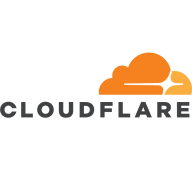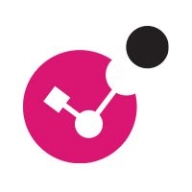


Symantec Data Loss Prevention and Check Point CloudGuard Code Security are key players in the cyber security sector, specifically in data protection and code security. Symantec seems to have a competitive edge with its extensive data protection features, but Check Point offers notable strengths in automation and code security management.
Features: Symantec Data Loss Prevention provides robust machine learning capabilities to classify documents and prevent data loss, supports various encryption mechanisms, and offers comprehensive endpoint and network security via tools like Data Insight. Check Point CloudGuard Code Security, designed for developers, integrates security management focusing on code review, automating compliance checks, and enhancing secure coding practices across multiple programming languages.
Room for Improvement: Symantec Data Loss Prevention faces challenges with its complex installation process, dependency on Oracle databases, and occasional support issues following Broadcom's acquisition. Check Point CloudGuard Code Security, while powerful, is criticized for its steep learning curve, high costs, and inadequate support documentation, particularly because it is a newer addition to Check Point's suite.
Ease of Deployment and Customer Service: Symantec Data Loss Prevention is primarily on-premises but supports hybrid models, increasing complexity with mixed support quality post-acquisition. Check Point CloudGuard favors cloud deployments, which might appeal to cloud-reliant businesses, though it faces inconsistent support and documentation issues.
Pricing and ROI: Symantec's pricing is high due to Oracle database dependencies, yet it offers cost-effective solutions for large enterprises with various licensing options that can influence growth and cost metrics. Check Point CloudGuard's pricing flexibility depends on user numbers and features, which can be attractive for SMEs but might require clearer pricing models to enhance value. Both solutions offer substantial ROI, with Symantec significantly reducing operational costs.
WordPress security can be tricky, and that's where Cloudflare can be absolutely helpful for small businesses.
For the small project I was working on, using the basic tier provided a huge improvement at zero cost.
In terms of return on investment with Cloudflare, it costs my time to set them up, but basically once they're set up, it's done.
This would help us address issues promptly, especially during unforeseen events like DDoS attacks.
Cloudflare does not offer hands-on technical support to fix customer problems but rather a self-service model.
The key factor is the language in which the support is offered, which, in this case, is in Thai.
I would rate the support for Check Point CloudGuard Code Security as good because we can quickly email support about any problems we encounter, and they reply instantly to provide help.
The support provided from both Symantec Turkey and distributor companies enables us to support customers and partners effectively.
The support team changed from MTechPro to a different partner, affecting our experience.
It is a SaaS tool, but the fact that they have workloads deployed across the world proves that it is a highly scalable tool.
The tool offers very good performance, even during high-traffic periods.
I rate the solution’s scalability an eight out of ten.
When using native proxy solutions, scalability issues are minimized, and the solution remains stable.
For DDoS protection, I would not recommend Cloudflare.
I rate the solution’s stability an eight out of ten.
The service is very stable with no impacts during high-traffic periods.
There's a need for improvement in areas like AI-based DDoS attacks and Layer 7 WAF features.
Despite these challenges, overall, Cloudflare remains the preferred solution compared to Azure, AWS CloudFront, and Google Cloud Armor.
The timing aspect can lead to it being considered overpriced. This is a particular concern we have with Cloudflare, as they may struggle with accurately detecting the client.
All the features we have on the firewall on the on-premises side, we also have under CloudGuard such as IPS, Anti-Bot, and all these blades are set up in our CloudGuard.
Symantec responded by creating an OCR module, enabling the capability to search within images.
A main disadvantage of Symantec DLP is its reliance on Oracle.
That's where Cloudflare shines for smaller businesses – it's ten times cheaper than Akamai.
I find it to be cheap.
I think they should consider reevaluating the pricing for support, as it can be quite high.
Symantec Data Loss Prevention is more expensive compared to competing solutions.
The most valuable features of the solution are performance and security.
Techniques like minification and image compression reduce the size of assets, leading to better performance and faster user load times.
The solution has been able to compare it to the market, and I think the product has taken great strides in automating quite a bit of things, and they use a lot of AI.
The most valuable features of Check Point CloudGuard Code Security include our approach to manage it via the management we have on-premises, and we also deploy the same extension management of CloudGuard to manage all the virtual systems on Azure.
Symantec's OCR module enhances image analysis, crucial for detecting data loss via screenshots, improving the overall security posture against data breaches.
Symantec Data Loss Prevention has proprietary metadata and is well-suited for endpoint-level security.



| Company Size | Count |
|---|---|
| Small Business | 46 |
| Midsize Enterprise | 8 |
| Large Enterprise | 25 |
| Company Size | Count |
|---|---|
| Small Business | 12 |
| Midsize Enterprise | 4 |
| Large Enterprise | 6 |
| Company Size | Count |
|---|---|
| Small Business | 23 |
| Midsize Enterprise | 12 |
| Large Enterprise | 27 |
Cloudflare is a highly-regarded Content Delivery Network (CDN) and a Distributed Denial-of-Service (DDoS) protection solution. The robust global connectivity cloud platform that is Cloudflare ensures users are able to connect to the Internet quickly, securely, and reliably. Cloudflare is one of the world's largest networks in the marketplace today. Using Cloudflare, businesses, educational entities, NGOs, vloggers, bloggers, and anyone else with an internet presence can experience more secure, faster websites and applications.
Currently, there are millions of Internet locations on Cloudflare, and the Cloudflare network
continues to grow every day by the thousands. The solution is able to fulfill the requests for
millions of websites seamlessly and serves on average 45 million HTTP requests per second.
Cloudflare has safe, secure data centers in close to 300 cities worldwide to ensure every
client request is filled as quickly as possible. It is Cloudflare’s edge network that makes this
possible by keeping content and other services as close to each client as possible, so the
information requests are always only seconds away.
Many organizations that work in democracy, civil society, human rights, or the arts are able to
access Cloudflare's highest levels of protection for free via Project Galileo. Additionally, official
election websites can be secured from hacking and fraud through Cloudflare’s Project
Athenian, also at no additional cost.
Cloudflare can also help organizations of all sizes develop a robust zero-trust strategy to
ensure the highest levels of productivity and profitability. Employees, stakeholders, and end users have a greater level of satisfaction and overall improved user experience, which can, in
turn, result in higher revenues and overall ROI. Zero-trust and BYOD (bring your own device)
access ensure end users and employees always have the best resources and technology
available to them at all times.
Cloudflare benefits
Cloudflare has many benefits. Some of its most valuable benefits include:
- Faster load times
- Robust DNS security
- Intuitive cloud Web Application Firewall (WAF)
- Free universal SSL
- Image enhancement
- Automatic browser caching
- Next-generation cloud load balancer
- Accelerated Mobile Pages (AMP)
- Rate limiting
- Minification
- Zero-trust capabilities
- Cost-effective
- Reduced carbon footprint
Reviews from real users
“Many websites require an SSL certificate because they sell stuff and want SSL. Cloudflare
comes with an SSL certificate built in. It's automatic. You sign yourself up for Cloudflare, and
an SSL certificate automatically protects your website. If you have a connection between your
website and your host, the server, Cloudflare, and the host, you don't necessarily need a
certificate.” Spencer M., Owner at Tech Exchange
“What I like best about Cloudflare is that my company can use it to trace and manage
applications and monitor traffic. The solution tells you if there's a spike in traffic. Cloudflare
also sends you a link to check your equipment and deployment and track it through peering,
so it's a valuable tool.” Daniel P., Network Engineer at Ufinet
“The most valuable feature of Cloudflare is the GUI. You are able to control the solution very
well through the interface. There is a lot of functionality that is embedded in the service.” PeerSpot user, Competence Center Manager at a tech services company
Check Point CloudGuard Code Security provides real-time protection and compliance enhancement across diverse infrastructures, streamlining security management with automated processes and accurate threat detection.
Designed to support multiple code languages and cloud environments, Check Point CloudGuard Code Security offers seamless integration with existing workflows. By implementing intuitive dashboards and role-based access control, it enhances operational efficiency while minimizing human error. The system secures identities, API keys, and configurations, aligning with legal frameworks to strengthen infrastructures against modern threats. However, improvements are needed in documentation, multilingual support, and easier integration with SIEM. Attention to geolocation, logging, and learning curves also requires enhancement.
What are the key features of Check Point CloudGuard Code Security?Across the tech industry, Check Point CloudGuard Code Security is applied to enhance cloud and application security, providing thorough protection against vulnerabilities and breaches. By integrating security across cloud environments and data centers, organizations achieve improved practices and adherence to compliance standards.
Keeping sensitive corporate information safe and compliant has never been easy. But today, you’re faced with a totally new set of data protection challenges. Sensitive information is leaving the safety of your corporate network as more employees share files over consumer cloud storage services and access those files on their own mobile devices. The number of targeted cyber attacks continues to grow, as cybercriminals develop effective new methods for defeating traditional security measures and stealing corporate information. And as all of these factors converge, it becomes increasingly difficult to manage corporate information and protect it against loss and theft.
Symantec Data Loss Prevention (DLP) provides a comprehensive approach to information protection that embraces today’s cloud- and mobile-centered realities. With DLP, you can:
• Discover where data is stored across all of your cloud, mobile, network, endpoint, and storage systems
• Monitor how data is being used, whether your employees are on or off the network
• Protect data from being leaked or stolen—no matter where it’s stored or how it’s used
We monitor all Data Loss Prevention (DLP) reviews to prevent fraudulent reviews and keep review quality high. We do not post reviews by company employees or direct competitors. We validate each review for authenticity via cross-reference with LinkedIn, and personal follow-up with the reviewer when necessary.